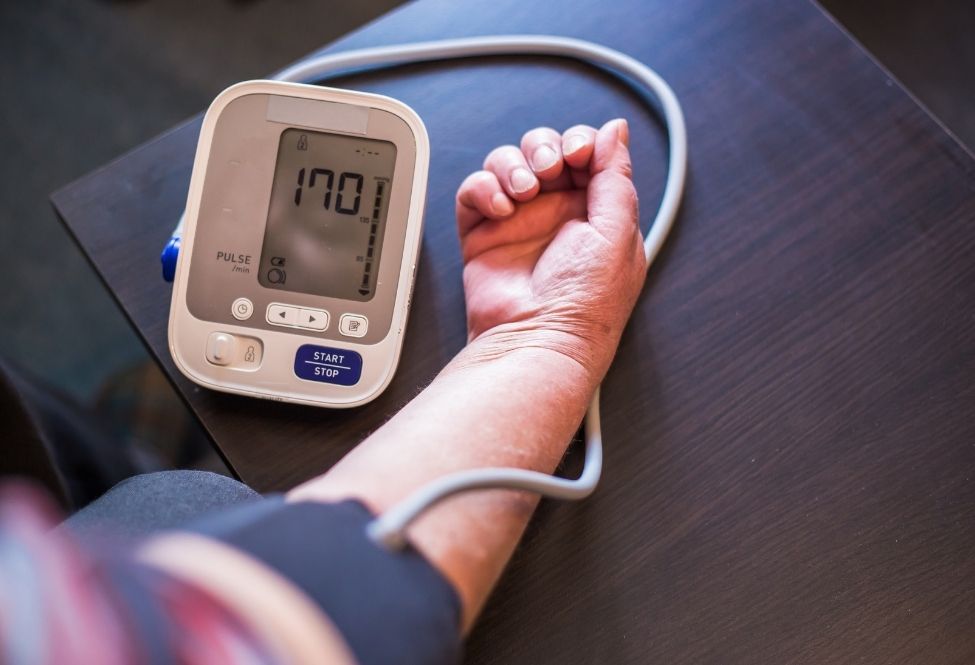Have you ever wondered what’s the highest cause of death around the world? That would be high blood pressure, about one-third of the world has and out of those, only 50% actually know they have it. Even more shocking, after the age of 50, almost one in two people have high blood pressure. The way we measure blood pressure has changed a lot over time and is still changing. For instance, measurement of central blood pressure used to be invasive but flattening tonometry allows us to put a sensor in front of the carotid or radial artery. We’re still treating hypertension on brute measurements, however these new diagnostic tools and personalized therapy help with marking other risk factors and end-organ damage in the preclinical phase.
If you want to read more, keep reading the article from Dr. Patrice Marenco.
Modern definition of hypertension
High blood pressure (hypertension) is the most common cause of death worldwide. One third of the world’s population has high blood pressure, but only 50% know it. One third of them have their blood pressure (BP) properly adjusted, i.e. 15% of patients.
The normal blood pressure value is still a topic of discussion among experts and has changed regularly over the last 15 years. It was redefined in 2018, in Europe to 140/90 mmHg for adults in the doctor’s office, regardless of age (children excluded). This value is purely arbitrary and may give the impression that the cardiovascular risk associated with blood pressure only starts above 140/90 mmHg. But this is not true. The risk of stroke, myocardial infarction, or kidney failure actually starts at much lower levels, as low as 115/75 mmHg, and then increases linearly with pressure. Systolic pressure increases gradually with age due to arterial aging, while diastolic pressure varies very little, resulting in an increasing increase in pulse pressure (systolic – diastolic) with age.
After the age of 50, almost one in two people have high blood pressure. Following the study, US cardiologists have just lowered the threshold for hypertension to 130/80 mmHg in 2019. The European Society of HTA (ESH) updated its recommendations in 2018, it did not change the HTA definition threshold. It has remained at 140/90 mmHg: The 130/139 mmHg range is considered “normal high” and is equivalent to Stage 1 for US Americans, but blood pressure targets have been reduced to 120-130 mmHg for people under 65. The target for people over 65 and under 80 is 130-140 mmHg. Only from the age of 80 has the blood pressure target been raised to 150 mmHg, mainly to avoid the risk of a drop in orthostatic hypotension.
Hypertension and early cognitive impairment
A large epidemiological study of more than 8000 volunteers over more than 20 years in France and the UK (Whitehall II Study, European Heart Journal) confirmed the increased risk of dementia in the 50-60 age group with blood pressure >130 mmHg compared to people of the same age with blood pressure below 130 mmHg. The increase in relative risk was +45%. This increase also occurred in patients without cardiovascular disease, but very often with silent and subclinical brain lesions (microhemorrhages, white matter microlesions). On the other hand, there was no increased risk of dementia in patients aged 60-70 and 70-80 years due to the short duration of exposure to risk. If hypertension does not occur until age 60 or even later, then the time frame is too short to observe dementia. In summary, the risk of developing dementia starts at a lower level than so-called “normal” blood pressure.
Diagnosis of hypertension: ABPM 24h
Ambulatory blood pressure monitoring (ABPM 24h) has become a mandatory test to confirm the diagnosis of hypertension and to evaluate the treatment started. This is a 24-hour non-invasive test that provides a near-continuous record of brachial blood pressure. A common problem with measuring blood pressure is its high variability over 24 hours.
For this reason, patient readings taken over the course of the day allow for a better assessment of risk and an understanding of normal or pathological increases in blood pressure (previously detected in the office). The ABPM device consists of a traditional upper arm cuff connected to a programmable electronic box and equipped with an automatic cuff inflation system. The ABPM examination should be performed in the patient’s normal living environment: At work, during work, at home, and during sleep.
Sie ist besonders angezeigt bei der Bestätigung der arteriellen Hypertonie (fast obligatorisch), vor Beginn der Behandlung und zur Beseitigung des berühmten „Weißkittel“-Effekts (falscher Bluthochdruck) sowie zur Gewährleistung der Dauerhaftigkeit der Hypertonie.
ABPM is also indicated for the investigation of nocturnal blood pressure fluctuations, for the investigation of unusual variability of normal pressure, and in cases where self-measurement by the patient is not possible. This makes it possible to detect masked hypertension (hypertension at home but not in the office, and nocturnal hypertension), which accounts for more than 20 % of hypertension.
In addition, numerous studies have shown that this test can prevent a cardiovascular event: The 24-hour ABPM is, therefore, a better reflection of cardiovascular risk than blood pressure measured in the doctor’s office.
The new concepts: Central blood pressure and arterial elasticity
The measurement of blood pressure at the arm (brachial pressure) in the consultation has long been the reference for the assessment of cardiovascular risk in the follow-up of hypertension. One can no longer limit oneself to these two blood pressure values, but must analyse a pressure curve.
Numerous epidemiological studies have now demonstrated that the level of brachial pressure correlates strongly, gradually and independently with cardiovascular events and mortality. However, this technique has two limitations: The first is related to the fact that the measurement during the consultation may not reflect the person’s true blood pressure during the day (white coat effect, etc.). This first limitation is partly resolved by ambulatory blood pressure measurement (ABPM-24h or “Remler”). The second limitation is that brachial blood pressure can be very different from aortic blood pressure (also “central blood pressure”).
Measurement of central blood pressure (or aortic blood pressure).
Measurement of central blood pressure used to be invasive, by left heart catheterisation, which severely limited its usefulness in asymptomatic hypertensive patients. Flattening tonometry allowed non-invasive measurement of central blood pressure by placing a sensor in front of the carotid or radial artery. Various devices that emerged from basic research are now available in clinical practice. They allow rapid and non-invasive measurement of central blood pressure and arterial elasticity, the essential component of the hypertension mechanism.


Modification of haemodynamic components of blood pressure by antihypertensive drugs.
Several comparative studies have shown the superiority of certain drugs (calcium antagonists, blockers of the renin-angiotensin system) in lowering brachial and central blood pressure. The ASCOT study in high-risk hypertensive patients showed that the reduction in brachial blood pressure achieved with treatment was identical in both drug groups, while the cardiovascular prognosis of patients treated with the combination of amlodipine + perindopril was better.
It was the measurement of central blood pressure in one of the study samples that showed a further reduction in central blood pressure in the amlodipine-perindopril combination group. These data therefore partly explain the observed clinical benefit. The 2019-2020 SPARTE study showed that measuring arterial elasticity could guide clinicians in their choice of antihypertensive treatment.
Prognostic value of central blood pressure
Central blood pressure is a more robust marker of cardiovascular prognosis than brachial blood pressure. Most studies comparing these two parameters favour central blood pressure. This has repeatedly been shown to be more effective in terms of end-organ damage, such as arterial (measuring intima-media thickness of the carotid wall), or left ventricular hypertrophy. Recent work comparing the prognostic value (all-cause mortality and cardiovascular) of central blood pressure with 24-hour measurement (ABPM) has shown no significant prognostic difference between these two methods of measurement. The combined advantages of ABPM and central pressure measurement will soon be combined in a single measurement device thanks to current technological advances. Arterial elasticity and central blood pressure are the new markers of risk and end-organ damage in the preclinical phase.
Clinical application
The measurement of arterial elasticity has become available in practice and allows us to better stratify patient risk by directly measuring arterial stiffness, but also to monitor the effectiveness of our treatments. Measurement of central blood pressure is no longer a measure reserved for the services of hypertension specialists, but can now benefit a young patient to distinguish a phenomenon of marked arterial amplification (spurious hypertension) that does not require treatment from a truly high central blood pressure.
The increase in aortic stiffness is due to various phenomena (HTA, decrease in elastin fibers, fibrosis, calcification, atherogenesis, inflammation, etc.) and is an integrated marker for other risk factors. Finally, an increase in central systolic blood pressure is predictive of neurovascular events (due to carotid or intracerebral atheroma, hemorrhage or occlusion of distal arteries). The study of central arterial distension, therefore, measures the significance and age of these risk factors, predicts end-organ damage and hence cardiovascular morbidity and mortality.
Carotid-femoral pulse wave velocity (cfPWV) is the reference method for the study of arterial distensibility. It is now included in the 2018 recommendations of the European Society of Hypertension and Cardiology. Pulse wave velocity analysis can identify subgroups of patients with abnormal arterial stiffness (high pulse wave velocity). It improves the stratification of cardiovascular risk and allows the identification of subgroups of high-risk patients who should be followed more intensively because they will cause more or less long-term problems.
CONCLUSIONS:
Both pulse wave velocity and central blood pressure remain tools for physiopathological, epidemiological or therapeutic analysis. Although the decision to treat hypertension is still based on brute measurement, these new tools are markers for other risk factors and end-organ damage in the preclinical phase.




![CH12768_BANNER-MANCASSOLA-980x180-EN[1]](https://rang-group.ch/wp-content/uploads/2021/05/CH12768_BANNER-MANCASSOLA-980x180-FR1.png?v=7250)





